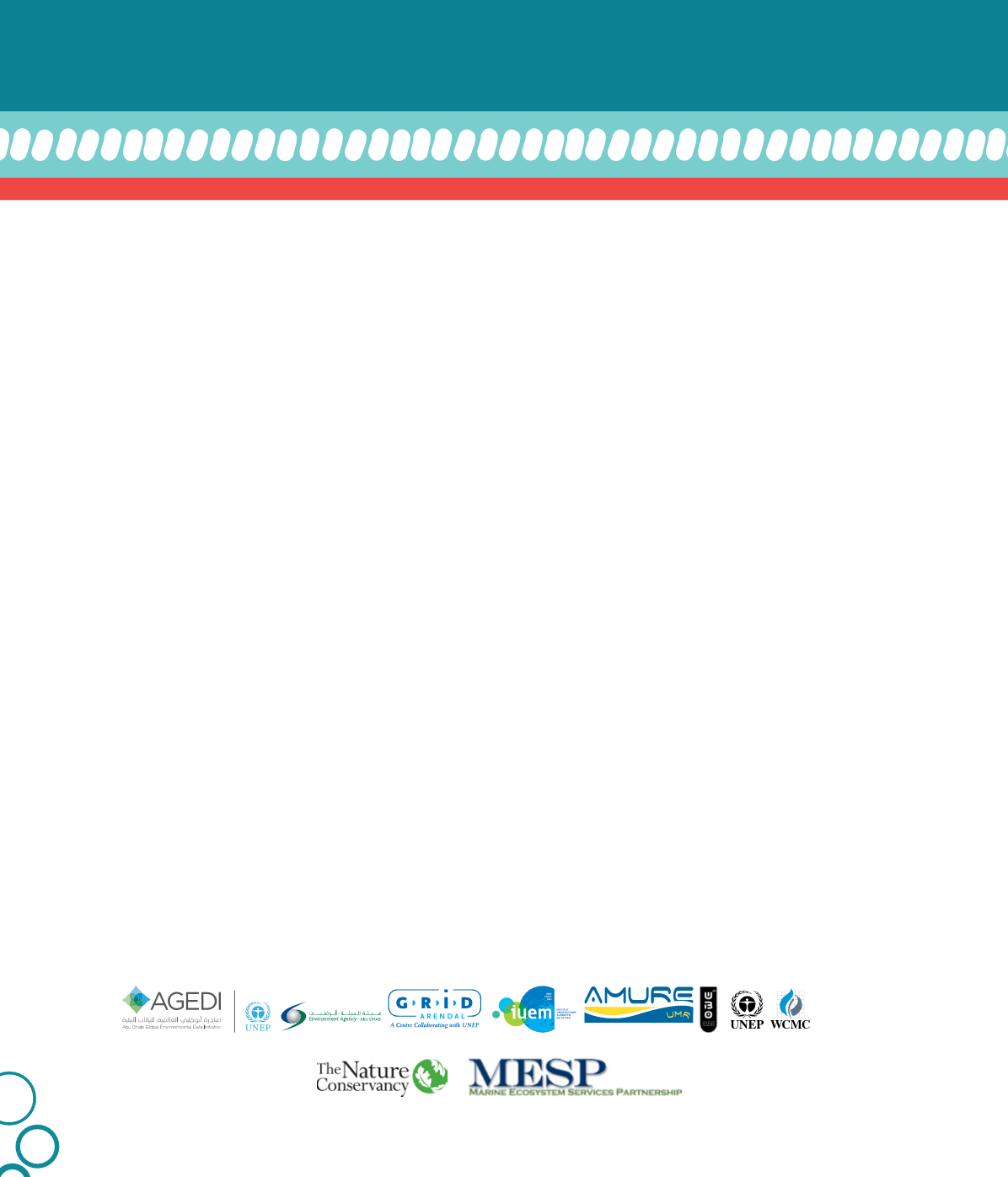

2
.
Acknowledgements
We would like to thank Carl Nettleton, Open Oceans Global, for his excellent review , and Garth Cripps, Blue Ventures Conservation, for his
wonderful photos.
Partners
This publication was made possible by the AGEDI Oceans and Blue Carbon Community Special Initiative of the Eye on Earth Movement.
Eye on Earth addresses the crucial importance of environmental and societal information and networking to decision-making. Under
the guidance and patronage of His Highness Sheikh Khalifa bin Zayed Al Nahyan, President of the United Arab Emirates, the Abu Dhabi
Global Environmental Data Initiative (AGEDI) was formed in 2002 to address responses to the critical need for readily accessible, accurate
environmental data and information for all those who need it. With the Arab region as a priority area of focus, AGEDI facilitates access to
quality environmental data that equips policy-makers with actionable, timely information to inform and guide critical decisions. AGEDI
is supported by Environment Agency – Abu Dhabi (EAD) on a local level, and by the United Nations Environment Programme (UNEP),
regionally and internationally. For more information, visit
www.agedi.ae.
GRID-Arendal has served as the chief editor of this publication. GRID-Arendal is a centre collaborating with the United Nations Environment
Programme (UNEP), supporting informed decision-making and awareness-raising. GRID-Arendal supports the integration of marine and
coastal ecosystem services into planning and decision making through a range of global projects developing and sharing good practice and
building capacity of institutions and practitioners.
Linwood Pendleton holds the International Chair of Excellence for Marine Ecosystem Services within the Centre for the Law and Economics
of the Sea at the European Institute for Marine Studies, University of Western Brittany. He is also Senior Scholar at the Nicholas Institute for
Environmental Policy Solutions at Duke University. Anne Kaup is the Executive Manager of the Marine Ecosystem Services Partnership.
The United Nations Environment Programme World Conservation Monitoring Centre (UNEP-WCMC) has contributed the chapters on Data
Requirements and Linking to Policy-Making of this publication. UNEP-WCMC is the specialist biodiversity assessment centre of the United
Nations Environment Programme (UNEP), the world’s foremost intergovernmental environmental organization. The Centre has been in
operation for over 30 years, combining scientific research with practical policy advice.
The Nature Conservancy’s Mapping Ocean Wealth project has made their infographics and case studies available to this publication. Mapping
Ocean Wealth’s mission is to describe – in quantitative terms – all that the ocean does for us today, so that we make smarter investments
and decisions affecting what the ocean can do for us tomorrow. Supported by a consortium of global organizations, Mapping Ocean Wealth
is informed by rapidly advancing marine science and field-based studies from around the globe that examine what drives the value of
ecosystems and how they benefit people.
The Marine Ecosystem Services Partnership (MESP) strives to improve communication between valuation researchers and policy makers
by providing contextual perspectives for understanding valuation data in relation to environmental management decisions. The Partnership
aims to be a community of practice through which data users and managers can work collectively to better integrate ecosystem services
data with marine policy needs. This collaboration is aided with the use of tools such as the MESP mapper and valuation library that provides
access to a collection of economic valuation studies and data found on the MESP website.
an initiative of
Project Team
CENTREFORTHELAWANDECONOMICSOFTHE SEA


















